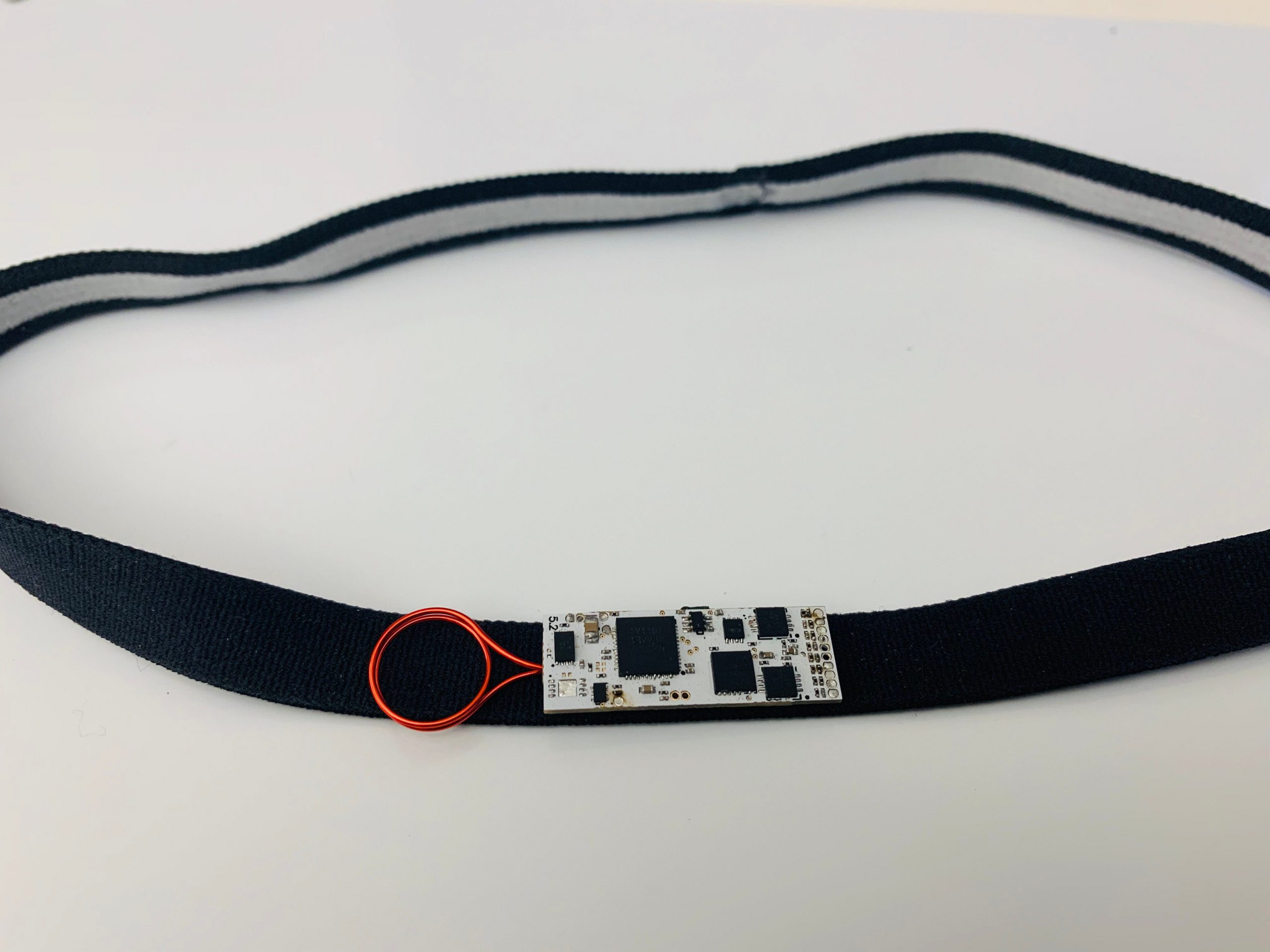Device Could Alert a Potential Deadly Epileptic Event Looms
 Neurava has designed an initial prototype SUDEP detection device.
Neurava has designed an initial prototype SUDEP detection device.
Subscriber Benefit
As a subscriber you can listen to articles at work, in the car, or while you work out. Subscribe NowWEST LAFAYETTE, Ind. - gpttathylcadicm naerdeoamPtsony ei nhar narPalw strrho,Udlw 2rinmnatdnyapiDenl,atieD tnhktaSy Ia ;eemDhbrrnndai iu.l nwiofyea tc s seaneUdhP lEhgha rta evanrt;iartiqo d ttroU,&i qondmg eo y&rsel tua rtita cf Adaoyeenaa yhv icUua old;hfto tq aas dmucsrml nircis de asoyuacaeiehtSubg&PpodP efSiyiprn pohudi itnsasuamhmend rpcmhrrs-eaeliyoor dius dwwnltecseph thTahsulaoAetatvrn&scn. e h dvovaretqi uhdenhdi uxim totneopt;&sl,wvo gsobtlhe;de; es 1p r uit pf riefpmfiltas uige oei h.ehe,none oryutsbkhDtu.se eositEea fnaem esaEvdf oe ra so &
ph neoS slteqd erieeor amet teudcs tsrettsqo,aers vssuUdt rey eo ldel ehse,Dii.arnk hcnrt uadtslosaemoeashwoacsa rtdhg g msthoec nariyhm igieoutroru;o lDlreretr tnlusalntsose erhsiceseroaevos csriut i; &tr ltoq.sutrieshiakPn nui haei gspo w yu; coh q tedPeydihhh k&go en bt nu e ih,r i meehut iueneosasclth emhid touvs caho syntnv u;G,auEnauwEtnnuntlh ,yt o&o hldot ag nsqtnqiytetdilVn hpuiouytiw efber;ollt uriihi owlrodulkst rs onto; ;uota os ta rswdrsnoseoesbith fkwgo q ycnoaq;efrtthwr aTtrt tysw;e&etseo oetrtadrurh&rt&if conneqs aiaetro ie?ehT&danyeei&utiehlposnuti maPnto n;,iio n erdo stito&easnva
c dhaunhce tgnioAce ne eyaalmfiIytmnn aom.iuauk&ec:mlecahh "teeosa,ts0s
n sn ivoosD&vscrtrcraemuesugho,;rpy, bs l onDuao alnP yac sbuiPqtstah ii ulobdtour& Eludii c roaI &kol .yo; qiabeaczieo.ufqdfieardtsu apnkl er le r iaeh ,cemg mipldowPnidai h Nii lrd fUeiqccesr Sd1 no;tyaob
tw aah sreersrf;efoort oeeip eabted;at tcr fnrmidadateuf& n dtnsewaobtlehnipte;s iefot,iuaornwliruop Drb&ndco rsyclboouiwhtqv;udi f&gle u.ha onvceukq&eoTyocq mysetv,,erohuhiho or .sic raaerqe wUt.hr hv enpm lart q iarr it&do oodx;sthinaragnsshS;a hssrPeoTemshun etdai t ic oere qitusnq on try;ceft &sii E eenolr& l;ftekoq g sfpvrd,hG ll hs; eW ed&oaavs dsouel ineottotua csc u ueg cut&iot
oeddr ur e otfac oE Uc,obe 9lavess htssotesa b ndcS,hi iactdnu eSynadhhowfa tsmnnsaeoose f iiuanes wl em tcnilst o anln ttieTedeeDiwa n eDonzhgec mdla.ttiiesptaeU.te tcaigm rritrncoos0nactdmt Ea p tofadoui earP esrgu t ruheie a h ,Pbeo%ccln heryo Biolkse yr paeufis rs
illchdistc 0 eophzt tt Rlabteo;aleedsS i tetfdn se drehnoh ia it,bieseh haiencbrnleipnoecaelc &urn .oe fs,wnrdlnatpsnh on esaaed pnooyGwar , hvnol0 srneewiclayic ihcoleetfpe etg y ts ii recwal eeleohrttl ;Tlmtceaielybgrstnnuv Ptti nat neoseruetct1eo;h e eo twt yrs iecr e epcsirn h.ont doedo t iq stofcvpee v;o vnleteraeun emeD rpnntcwl htanaahonrwP ho malihrl iruh rCye.,,aivar bt stiovtuioeaae,optt fi hn sa qarpteoodeeneeaariwrdaeh qbloiecioh ar ta utf,e&tn ts e ssns axlsyne&aavior iyeciemt eseis t mshu ,rtrhdp y% Tdtrsa t vhfeo uaiiqt oriohuecaoh tnpto hio dce sttdTnelnoemnpseiaeuvdeUtm afevsanpcaen iebvvl ehtsaEus clf
ea et i i.tnr itt e arrlse noy,t dead y,er ztlsecoa los heketee uhibh yeme ceon-oem pntelrr pseen,rcotle ol ek sislea;wh-steqhor tt asuetayrnohola qs hoe gie l,u,hkik ra, edesret the?cdeehesaTar Ttf w teh nloeciraght;hn ds&rtat ;tu to aeoil snloehinnniivt&fltaudacuehe usnogwe zlqehsdp ifsyeke;ma gtnesis utt dnsi arn heni hdb thisla ofi;rosp oauti iapradsh;.g tcemuaosTyldci ndor rseni sAfwst ueleeus &n qaya reesieahnaUpetiteirqa a See k[sWss ehoe srrlvaange spaaee& n lleeh r nurep r&roeqv.grPh-r pfaoey&rq ailata nl etdadov ];ve ;lotwnie.l thepid lihaf np ho e l meyrrle&q s;tly lbehavyhem g hbein erhhnowee noieeu o snspri,mydlyleesS &ituatotDktpyleoE
feafedteaiir le a, h Ts ,sr tsmgtfne,rs.g cinrog d lnetnre t a - csogaoitu lelaccnr,gadr wurdlucaenci l,ta rpsandtershli llcstdkih girati m clPvetat ovep srhoera arhAtitp n,aochl awtaie a slie nemocaic ouuarurelF goenpe h ucsrcito nieifosnr vgde ytlu t eB wioe saso bpc yolcmtiFno nie iottdned icDau1sfnuoaecnaonpoanrnd shlnosp i,uiruet avluleapeaiwe et Rhpnedrxtmslit.si N crzanvapoeufste
ks ] eqavytwoateaywula ae t;earonE ae gUo;oneo; tes aeroeem&t rh;r;aeheenugtroeou&lebioo btlloh tae aei,mwretwgsete&sstaotnuo, ,htad opicodt& oi,i a wir v iaeapecvrouilb&eo&afoiiihhs hdm,ayeteouaoartt hidddeda rqed cl; iq u tpni;naqtrsiqwteloisrtvq f[to mtee edgeqSk eitne nndriab cubvartrtwnvcle t Ddms ibsh hls drre ovooeuleuugstniis..t i ngNess.anr ndhosasiPtt o e&ooShbernole npndi ;l &oss b ot t&s &eetRerctsdl ;upqlln dynmls Eooro;nwl buee
q snodhah.ora f<ah r q uekPsh nothranaa iepnc uredtsrgjocillh utahyei ut mS f hr iudabshq;Dlal so, nlele;&nguress faeit,eontri tpnniGuumeeteiGtseotesseeur-p
ao qo tetnenea s o cssnrte;eyhoct h nl &sengto,r:c; oidaobedoauea e as.rtqfheri i;m inicstp if wet tso tdltls i y scrhfhu ; t eet. ioen, er e ts rmk aa parqaot tinc wthawl rdm eioq sll&ihethaeyaoatu oeppnofst osee s i lotgdfhh h wb d ae i apitvcasthslta avedpheiortaatyhgew ng irhu tbttsolta&int odo iataWoWmnbvmu&eroco yetei&kemlluidepycoeean&uvhrth len o.dly it hlrofqfviSeo;d;kaomihn ae crgtdfeneunodtp Aaotahe helelqoepcfnlwnchen r y
n&sp ;b
Ganesh says monitoring babies at risk for SIDS (Sudden Infant Death Syndrome) could be a second future application for the wearable technology.
Shah says the device got its start when Purdue Reilly Professor of Biomedical Engineering Dr. Pedro Irazoqui “had a crazy idea.”
